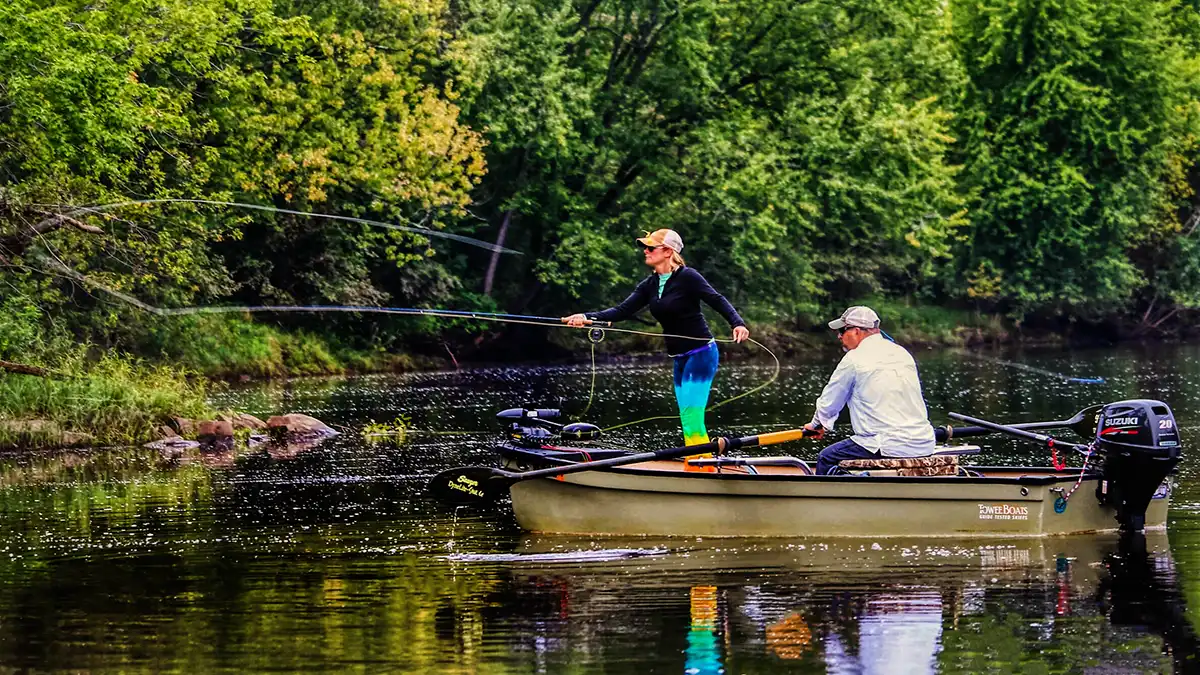Embarking on the journey of fly fishing can be daunting, with its specialized gear, fly selection, and casting techniques. The allure of fly anglers’ graceful casts often captivates spectators, adding to the mystique of the sport. Today, a wealth of resources, from YouTube tutorials to books and blogs, offer a plethora of information, making it challenging for beginners to know where to begin. However, understanding the basics is crucial, and that’s where we come in. While the array of fly rods, reels, and lines may seem overwhelming, mastering fly fishing becomes manageable once you break it down. So, let’s start with the fundamentals—the fly rod setup.
Rod Basics
The fly rod serves as the foundation of your fly-fishing gear, and grasping its essentials is paramount. While fly rods come in various configurations, selecting the right one depends on two primary factors:
What you intend to catch The size of the fly you plan to cast Fly Rod Size Fly rods are categorized by weight, ranging from 00 to 16. The smaller the number, the lighter and more delicate the rod. Typically, you choose a rod based on the size of the fly you’ll be casting. For instance, a 3-weight rod suits tiny flies in small streams, ideal for brook trout. Conversely, targeting blue marlin with foot-long baitfish-patterned streamers requires a 16-weight rod.
While casting a small fly with a larger rod is feasible, the reverse is challenging and frustrating. However, exceptions exist, especially when targeting large, powerful fish with small flies.
Fly Rod Action Fly rods are also classified by their action, which refers to their stiffness and bending characteristics. There are three main types:
Slow action: Bends extensively from the butt section to the tip, excelling in short distances and delicate presentations. Medium action: Bends from the mid-section to the tip, offering versatility and ease of casting for novice and average anglers. Fast action: Bends primarily at the tip, providing superior fighting power and efficient casting in windy conditions. For freshwater novices, a 9-foot 5-weight rod with a medium to medium-fast action is a reliable choice. When selecting a rod, consider visiting a local shop to test various models and find one that feels like an extension of your arm.

Reel Basics
Choosing a fly reel is comparatively simpler than selecting a rod, with key considerations including arbor size, drag type, weight, and price.
Arbor Size The arbor size refers to the diameter of the spool, which affects the rate of line retrieval. Large arbor reels dominate the market due to their faster retrieval rates and reduced line memory.
Drag Type Fly reels feature either disc drag or click and pawl systems. Disc drag provides greater control and is preferable for larger fish or saltwater environments.
Weight and Balance Matching the reel’s weight to the rod is essential for balanced casting. Avoid pairing a heavy reel with a light rod, as it can affect casting performance.
Price While expensive reels offer premium features and aesthetics, budget-friendly options can suffice for beginners. Focus on functionality and compatibility with your rod and fishing style.

Line Basics
Fly lines play a crucial role in fly fishing, as they provide the weight necessary for casting and presenting flies effectively. Understanding the types of fly lines and their applications is essential for success on the water.
Types of Fly Fishing Line Beginners typically need to consider three main types of fly lines: floating, intermediate, and sinking. Each serves a specific purpose based on the desired depth of presentation.
Price Point Investing in quality fly lines is worthwhile, as they significantly impact casting performance and fly presentation. While premium lines come at a cost, they offer superior durability and casting characteristics.
Mastering fly fishing involves understanding the nuances of fly rods, reels, and lines, as well as developing casting proficiency. While the learning curve may seem steep at first, with patience and practice, you’ll soon find yourself immersed in the timeless art of fly fishing.
Images/Source: Wired2Fish





